Well drilling: purpose and methods of implementation
Well packing is a set of measures aimed at protecting the subsoil and strengthening the annulus and casing from the damaging effects of rock and groundwater. Many independent readers who are beginning to drill themselves often wonder if they need tamponage of a well for water, and how to make it themselves.
We will try to answer.
Well cementing
Purpose
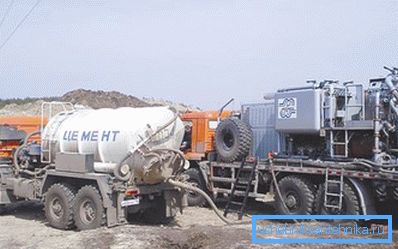
To begin with, we define the term itself. Tamponage is the filling of rocks and cracks present in them with cement mortar to prevent water, oil or other minerals from seeping through the rock and penetration of these substances into other layers and soil horizons..
There are:
- direct cementing of the annular space of the wells in order to strengthen the wellbore and prevent leakage of the water and groundwater into the limestone layer;
- cementing to eliminate the well - liquidation plugging.

Liquidation is needed because in some cases the old well begins to pose a threat of infection of the aquifers. Artesian water reserves are considered strategic reserves of the state; therefore, their safety is the safety of the country.
On the basis of analyzes and examinations, the competent authorities decide on the need for the liquidation packing of the object, then draw up a draft of the work, and, after its approval, carry out cementing by professional organizations.
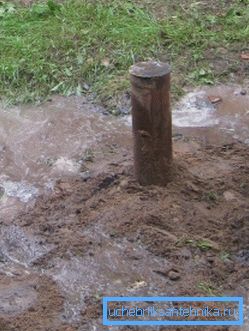
Note! Operational cementing makes sense only in the case of a large depth of the well and certain characteristics of the rock cut. For the drilled wells “on the sand”, this measure has no practical sense, since in this case there is no danger of communicating different aquifers.
When drilling artesian wells, the decision on the need for cementing is made by the organization that performs the work.
When do you need tamponazh
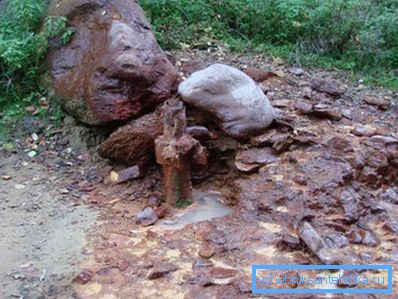
To concretize the article, you should immediately identify the signs by which you can determine the need for cementing and abandoning the well.
So, tamponage is necessary in cases if:
- Water quality in the well has deteriorated, and restoration or improvement is impossible or impractical due to technical, physical or economic considerations;
- The object has developed its resource and is no longer exploited;
- Temporary wells of small diameters are no longer of interest due to the emergence of other sources of water supply;
- Defects in the structure of the object were found, the flow rate decreased, or an accident occurred, and the restoration is economically unprofitable or technically unfeasible;
- Exploration or exploratory drilling has completed its task and is no longer needed;
- Sources with pressure gushing water ceased to be constantly exploited;
- Absorbing wells began to pose a threat of contamination of aquifers.
It should be said that plugging is most often performed while drilling oil and gas developments. When extracting water, objects are rarely cemented, in special cases.
There are no clear rules on when concrete concreting should or should not be done, everything is decided in the process of designing and producing works on the basis of intelligence data, the structure of the rock section, its composition, etc.
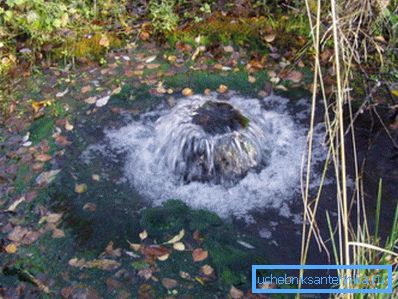
In practice, everything looks like this: after the completion of drilling, the owner of the well receives a passport to the object, where it is indicated how it should be followed up and what measures to take in certain circumstances. Among other things, it says that in the event of an accident, breakdown, deterioration of quality and other force majeure circumstances, the owner must notify SES.
Next SES produces water for analysis and inspection of the object. Based on the data obtained, the station makes a verdict on the state of the well and its subsequent fate, and the owner receives instructions for the actions that he is required to carry out in order to eliminate the damage or object.
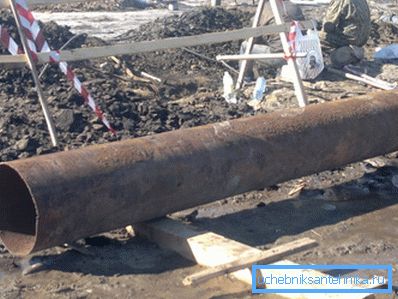
Note! Responsibility for the proper conduct of all the prescribed activities falls entirely on the owner, and the failure to comply with these regulations threatens criminal prosecution for violation of the law on the protection of the subsoil.
Work on the correct plugging is performed using special equipment, the price of which is very high for a private person or a summer resident. Therefore, many are interested in whether it is possible to cement it yourself? There is no unequivocal answer, it is necessary to consider each individual case.
Installation

For owners of privately made wells, one should be aware that their Abyssinian wells and wells “on the sand” do not need to be cemented. This is explained very simply: these objects do not pose a threat of contamination for fresh water, as they do not cross different aquifers, but draw groundwater from a sandy aquifer.
However, another danger remains for such objects: upper water and sedimentary water can penetrate along the casing or needle into the sandy layer and pollute the groundwater, reducing the characteristics of the source.
Here recommend several ways to protect against this danger:
- The water source is placed under the canopy, and around it organize a waterproof bedding or blind area.. It is the bedding that is preferable, since concreting over the well leads to the fact that as a result of subsidence of the rock in the annulus, a void forms under the concrete layer and the blind area collapses. Also the bedding does not allow puddles to form around the source;

- Fine gravel or screenings are poured into the annulus, and the top couple of meters are covered with a thick layer of clay, which forms a waterproof castle.. As a result, the water supply does not fall into the well;

- Finally, the annulus is filled with concrete or cement mortar.. To do this, you need to install the oil seal above the well filter or pour a filtration zone and a half to two meters above the rubble, and then pour the solution into the canal with a shovel. During the work it is necessary to vibrate the pipe for dense laying of concrete.
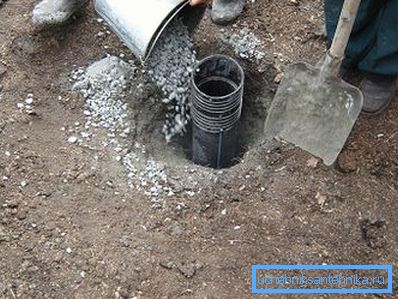
Conclusion
Tamping and cementing of wells is a serious task, which is performed by state or accredited private organizations with the help of expensive, serious equipment. At home, such work does not produce, and strengthen the casing with simple "old-fashioned" methods. To illustrate this, we offer a video in this article.